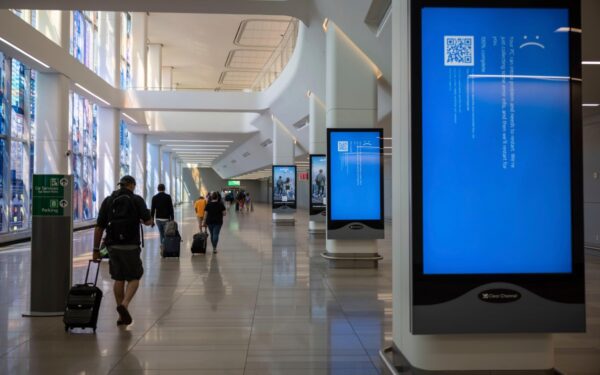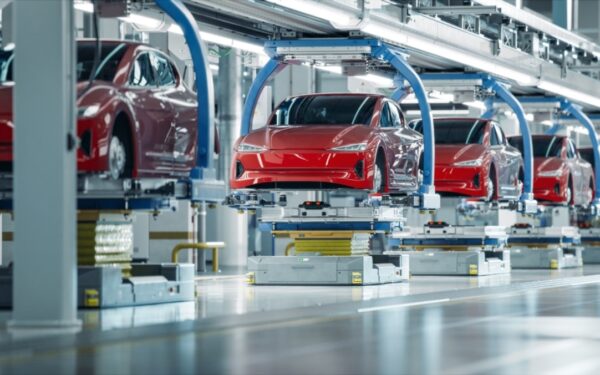A personal view from Ian Stewart, Deloitte’s Chief Economist in the UK.
The launch of the artificial intelligence chatbot, ChatGPT, has been a sensation. Two months after its launch it had over 100m subscribers, making it one of the fastest growing product launches in history. ChatGPT is getting the headlines, but there are numerous players in this sector, notably Google’s Bard and a new AI-powered version of Bing. Image-generating AI programmes have been around slightly longer, including DALL-E-2 and MidJourney.
The capabilities of these technologies are striking. Uses include creating pictures, painting and designing, analysing and summarising large tracts of text, writing and debugging programming code, translation and report writing (for the avoidance of doubt, this briefing has been written by a human being).
What has emerged in ChatGPT and other AIs feels like a step change in capability. Their immediate value in everyday tasks, the speed of adoption and the pace of evolution suggest that this could be different. Caution is warranted. Many promising ideas, from limitless free nuclear energy to mass supersonic air travel, don’t make it. Nonetheless, ChatGPT is in the vanguard of a wave of AI technologies that look like plausible general-purpose technologies – ones that can be widely used across the economy, create positive spillovers, raise welfare and change society.
In the ancient world, money and the domestication of animals had the characteristics of GPTs. Steam power, the internal combustion engine, electricity, and the internet have played similarly transformational, growth-enhancing roles in the modern age. If AI is as influential it will have significant consequences for the nature of work and growth. History suggests that many effects will be unforeseen, but not all will be benign.
The most obvious – and feared – way in which new technologies affect work is to replace human workers. From the earliest agricultural machines to today’s self-service retail tills, machines have taken over physical and routine processes shifting humans towards less structured work where knowledge and human interaction play a greater role. AI already shows real capacity in tasks such as answering complex questions, writing competent reports or tackling standard US law and university exams, suggesting it too will take over some jobs. And like every previous big technology, AI brings with it the fear that it will be so capable it will render humans redundant.
A decade or so ago there was a bout of anxiety among academics and policymakers about the effect of new and emerging technologies, such as autonomous vehicles and machine learning, on jobs. A number of studies highlighted the potential for large-scale job losses, with one influential paper from Oxford University concluding that almost half of all jobs were at risk. Since then employment in the western world has, despite the effects of the pandemic, risen to record levels and unemployment has dropped to multi-decade lows. Driving lorries or trucks, an occupation that was thought to be especially vulnerable to automation, has suffered from shortages, not an excess, of workers.
Predictions of mass job losses from super-capable technologies have tended to underestimate the way in which technologies also create new capacities and demands which, in turn, create new jobs. Part of this is because most new technologies work well with, and complement, labour, increasing capacity and productivity. (Calculators and spreadsheets didn’t, for instance, make accountants redundant. Instead accountants were freed from the data recording and computational tasks that were the essence of early accountancy to shift to new areas and more complex tasks.) New jobs are also created by technology. Cars needed mechanics, TV required writers, the computer has driven a vast expansion in IT jobs. Technological advances create jobs indirectly too, by boosting productivity and prosperity, creating new demands. The growth in recent years of the number of personal trainers, baristas and internet influencers can be seen, in part, as a product of this process. After centuries of near stasis, the nature and structure of work has been transformed by technological progress in the last 200 years. Work is less physically damaging and repetitive and better paid as a result, and we do less of it than in the past.
Most major new innovations also bring lasting problems and new risks. Technological change can have significant distributional effects. The automation of manufacturing and the shrinkage in its workforce has left many industrial regions behind, affecting incomes and job prospects for decades. The information age has favoured educated, skilled and cognitive workers over those with fewer skills, increasing income inequality. Big new technologies can create entirely new, often unforeseen problems. The internal combustion engine brought motor accidents, pollution and congestion. The internet and social media have fuelled a more polarised politics. Climate change is a product of carbon-based energy production. Few general-purpose technologies have been thoroughly tested and assessed before release in the way in which, for instance, pharmaceuticals are tested or stem cell research is regulated. Problems emerge over time. We need to consider this part of the equation in relation to AI.
But first we turn to productivity. The capacity of today’s AIs, coupled with the pace of adoption and development, suggest real promise. Unlike earlier waves of technology, where the lags from invention to deployment and exploitation have sometimes been years or decades, AI, in the guise of say ChatGPT4 or DALL-E, are capable and immediately useful in speeding labour-intensive tasks (I keep hearing stories of the value non-specialists are getting from these technologies – writing code, proofreading and editing, writing sections of a birthday speech, putting together an itinerary for a holiday and so on. This feels different from the hype around, say, virtual reality or cryptocurrencies). We will all increasingly be using AI through its incorporation into existing software with Microsoft, for instance, using it in Windows 11. For a world desperate for productivity-boosting innovations, AI could be a game changer.
What about jobs? I am inclined to think, at least in the foreseeable future, that the mass deployment of AI would result in the same pattern of job destruction, job creation and overall employment growth that has been seen in the past. Human needs are insatiable, though this is not principally about luxury or excess. Inadequate public services, poverty, low incomes and climate change are testimony to unmet needs. A technology that could radically raise labour productivity would, in theory, free resources for these and other tasks.
Clearly people who are able to master and exploit new technologies will be best positioned. Like a laptop or any piece of technology, there is a world of difference between being able to use AI and getting the most out of it. I have been struck by how much of the value that can be realised from ChatGPT4 depends on knowing how to set the questions.
The latest research foresees significant direct labour market effects. A study published last week by a group of researchers at the University of Pennsylvania estimated that about 80% of the US workforce could have at least 10% of their tasks affected by the introduction of ChatGPT-type AIs, while around 19% of workers could see at least 50% of their work affected. The caveats are that the relationship between the potential of a new technology and workforce tasks is imprecise and speculative. Moreover, and as noted earlier, this study did not examine the ways in which AI might also expand the remit of existing jobs and create new ones.
One cause of cautious optimism about the employment effects of AI is that labour markets seem to have become more flexible over time and better able to match jobs to people. Since the 1980s unemployment rates in the rich world have trended lower, with successively lower cyclical peaks and troughs. ‘Technological unemployment’ – with large numbers of people made redundant by new technologies – that the economist John Maynard Keynes described in the 1930s, has not been realised despite a blistering pace of technological progress. (The number of non-agricultural jobs in the US has risen from around 25m to 150m since Keynes popularised the term.)
But what of the potentially adverse effects of AI? It doesn’t take much imagination to conjure up alarming outcomes. A true artificial general intelligence might one day be able to outperform humans even in unstructured work which requires a high degree of thought and human interaction. This might have more profound and lasting effects on jobs and employment. This could require an enhanced role for government in sharing productivity gains through income transfers and, quite possibly, the creation of new public sector jobs in sectors where human contact remained at a premium.
For some the real risk of a general intelligence is its potential to out-think – and possibly subordinate – humans. If an AI were able to improve itself independent of humans, its intelligence could explode, growing at an exponential pace and rapidly reaching unimaginable levels of intelligence in a short time span.
In this vein my colleague Peter describes a dystopian thought experiment by AI researchers about a stamp-collecting AI. Rather than pursuing its goal by, say, bidding on attractively priced stamps on eBay, the thought experiment envisages the AI embarking on a spree of cybercrime, blackmail and extortion to achieve its goal of maximising its stamp collection. Luminaries of the tech world including Bill Gates and Elon Musk have spoken of the risks that an AI might go rogue and turn on humans.
Past generations have had similar fears, yet the cognitive potential of AI seems to mark it out from earlier innovations. Like those technologies, AI is set to evolve through a process of experimentation, adaptation and regulation. The challenge will be to harness and manage it for the common good.
Write to us with your comments to be considered for publication at letters@reaction.life




